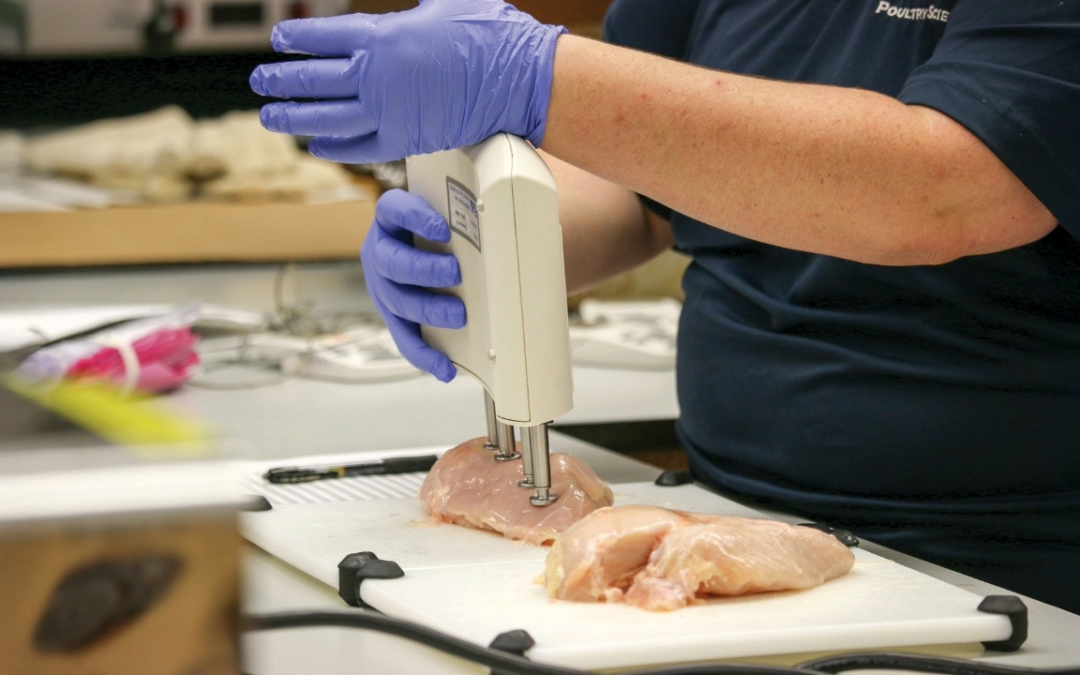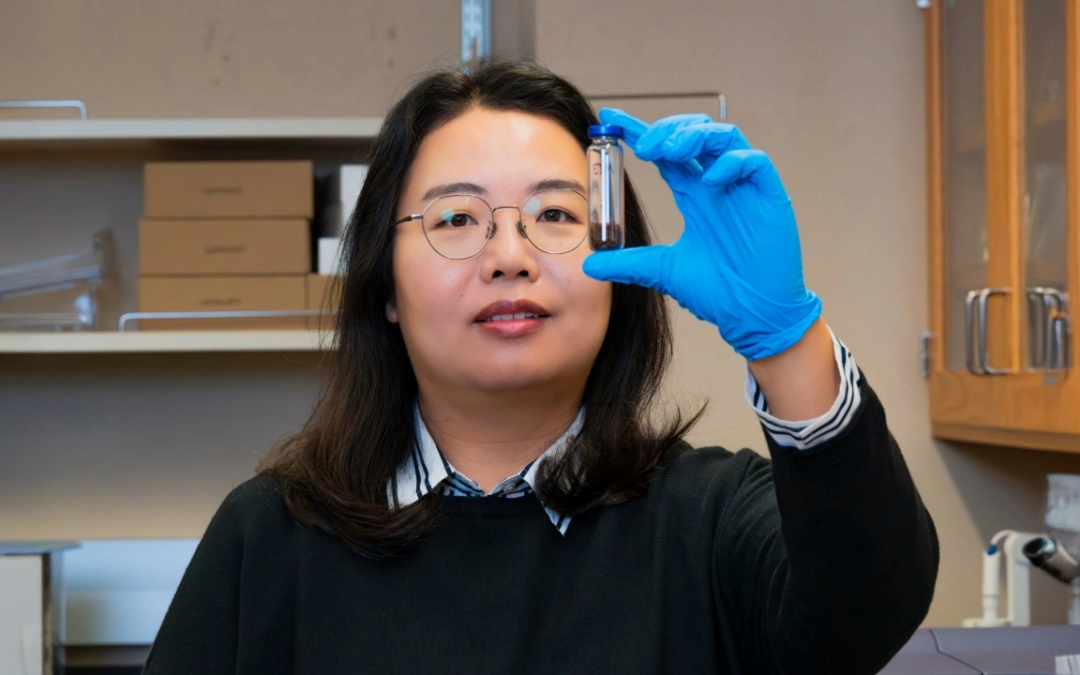By Paul Hollis
By most any standard, a $1.85 return on an initial investment of $1 is a good deal. According to a recent study, that’s what federal investments into agricultural research pay back through additional investments from state, local and private-sector sources.
The U.S. Department of Agriculture’s National Institute of Food and Agriculture, or NIFA, recently released a report that measured the effectiveness of the agency’s investments in the nation’s land-grant universities—investments that benefit the American public through agriculture and food research, extension and education projects. The report, “National Evaluation of Capacity Programs” was prepared by TEConomy Partners.
Among the report’s key findings, capacity-building grants program remains a relevant one that offers multiple benefits. Investments respond to the specific needs of local, regional and state agricultural producers. Capacity funds offer an essential funding stream for research and extension programs of relevance to producers who are unlikely to receive national-scale attention. Each dollar of capacity funding leverages $1.85 in additional investments, the report stated.
The USDA agency provides capacity funding to 112 land-grant institutions that are designated by their states to receive such grants. Among those institutions is Auburn University, where NIFA funds are vital to its mission, said Henry Fadamiro, associate dean for research for the College of Agriculture and associate director of the Alabama Agricultural Experiment Station.
“Simply put, there’s no land-grant mission without NIFA,” Fadamiro said. “NIFA funding is essential to what we do as a land-grant university. Without it, we cannot accomplish our mission.”
Grants awarded by NIFA come in several forms, he says, including Hatch Act funding, which helps pay the salaries of faculty in the College of Agriculture and other colleges at Auburn associated with the Alabama Agricultural Experiment Station, including the colleges of Science and Mathematics, Human Science and Veterinary Medicine and the School of Forestry and Wildlife Sciences.
“Every research faculty member in our college has an AAES appointment, and the majority of their research salaries comes from Hatch Act funding,” Fadamiro said.
Part of the Hatch funds also are invested into an internal grants program that provides seed funding for research projects that support and benefit Alabama agriculture.
“We use these funds to support our faculty research,” Fadamiro said. “Through internal grants, faculty propose ideas, which are then reviewed by experts internal and external to the university. Our programs typically fund 50 to 60 percent of the proposed research.”
Seed grants allow faculty to generate preliminary data.
“The researchers will then use the data to apply for external funding from USDA-NIFA and other sources,” Fadamiro said. “This seed funding helps our faculty leverage extramural funding. In addition to paying for staff and faculty salaries, it also supports training of graduate students.”
Funding innovations and discoveries
Along with Hatch funding, USDA-NIFA provides competitive grant funding. Auburn faculty have been relatively successful in the past few years in attracting these, said Fadamiro, whose own research program has benefited.
“Without external funding, we would not be able to train graduate students, and we would not be able to come up with new innovations and discoveries that have benefited and improved agriculture in the state,” he said.
Fadamiro said the success of NIFA funding is evident at Auburn.
“For example, one of our faculty just developed a new peanut variety, with part of that research being supported by NIFA funding,” he said. “When adopted by producers, that variety will likely lead to millions of dollars in economic development.”
Auburn also is one of the leading universities in the world in catfish breeding and genomics research.
“Through that NIFA-funded research, we’ve developed new breeds of catfish that have helped to promote economic development in the state,” he said. “Many of the solutions to problems that have been solved in Alabama agriculture were funded by NIFA.”
In addition, Alabama is expanding its production of fruit and vegetable crops, and, again, NIFA grants are making that possible, Fadamiro said.
“It’s the same across all of Alabama agriculture, including precision agriculture, poultry and food safety research and other areas,” he said. “Essentially, without NIFA’s funding, we could not have accomplished all that we’ve accomplished in agricultural research.”
Funding formula still relevant
The National Institute of Food and Agriculture commissioned this study to determine whether funding based on 100-year-old legislation is still a suitable model to support 21st century university needs. Other key findings include:
NIFA funding supports a holistic research and extension system. The capacity model of funding supports a complete continuum of research and development activity from basic inquiry, applied and translational research, and pilot and field demonstration. Moreover, the system provides a pragmatic feedback loop in which R&D responds to tangible needs, and research is shared by Cooperative Extension for use in farms, industries, communities and beyond.
NIFA funding supports a broad base of R&D to enhance the U.S. economy and society. Capacity-funded projects invest in topics directly relevant to agricultural and rural communities, such as agricultural production, food safety, agribusiness, bioenergy research, 4-H and youth development, and family and consumer sciences. The most prevalent types of capacity grants include agronomy, animal science and livestock, basic life science and forests and forestry.
Capacity grants spur innovation. Agricultural advances are based on science, and NIFA capacity investments are spurring progress. One in six patents in agriculture science and related disciplines was influenced by land-grant university research, as measured by patent citations. Of 23,512 relevant U.S. patents analyzed, 950 featured land-grant institutions as one of the original assignees. Patents focused on next-generation applications in biotechnology, life sciences and physical sciences. Top patenting topics informed by capacity funding are new plant varieties and cultivars, genetic engineering, fertilizers and other agricultural chemicals, enzymes, food production and additives, and animal husbandry and management.
Cooperative Extension connects with community. The capacity-funded Cooperative Extension System, based at land-grant institutions, provides a high-volume of knowledge, training, and informal education to agricultural professionals and local communities. Extension advice and educational content are in high demand. In recent years, extension has recorded an average of 58.5 million direct contacts with clients per year.
The federal government is a major funder of ag research. After the private sector, the federal government is the second-highest funder of agricultural and related research by a wide margin. The U.S. government is also the primary funder of early-stage, exploratory research and applied agricultural research on specialty crops, livestock, and agricultural commodities specific to local geographies and production environments.
Read the entire report at the NIFA website.




